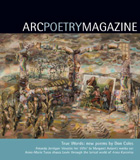Full Essay
I was first introduced to the poetry of P.K. (Patricia Kathleen) Page in Grade 11 English class at Booth Memorial High School in St. John’s, Newfoundland, in one of those sessions where a group of kids are handed a poem and instructed to wrestle the meaning out of it. The poem was “The Stenographers.” I don’t recall any of the instruction we received about its content or its craft, but years later I still get a shiver at the imagined cold lives of these women (“and the voice draws their pencil / like a sled across snow”).
“The Stenographers” is classic Page. Known for their strong visual imagery, Page’s poems are an elegant tapestry of images: never just the one picture crystallizing in your mind because one is too imprecise, it doesn’t say it quite exactly, so why pretend one image does the job adequately when you know what’s needed is something to build on the first, not to counteract its effects but to add another layer, another strand, until the web of the poem is woven so tightly on the page (reinforced by rhythm, under-girded with structure) that if the paper were to fall away, one suspects the typeface itself would still stand.
For the 16-year old aspiring poet I was at the time, “The Stenographers” was pure liberation. Until then I thought poetry was High Romance—a journal from the time is littered with vague agonies and sweeping immortal gestures. It hadn’t occurred to me until I read Page that a poem could specify with such stark grace the details of women’s unhappy lives and the society in which they found themselves reeling. Somewhere in a box is a bad poem about my best friend’s mother cleaning houses, which owes itself to “The Stenographers.” Possibly every sensible and necessary image since still calls back to that moment when Page began to teach me something about the whole purpose of poetry and how it might be written.
My encounter with “Planet Earth” was more recent. I spent December 2009 with a group of wastepickers at the UN Climate Change Conference in Copenhagen. With thousands of environmental advocates there, and millions more around the world, we fought with everything we had in the hopes of a climate deal that might somehow stop the destruction of “this great beloved world and all the creatures in it.” After the miserable failure at Copenhagen, I spent a good part of the winter wrestling despair. I found “Planet Earth” on the Internet, along with a YouTube video of Page herself reading it—the first image of her I’d ever seen.
I know it isn’t fashionable to talk of the visceral, emotional power of poetry—these days we’re more into poetic machinery and the technocratic analysis of whether a poem is a poem in the first place. But twice in my life now I’ve been at the utter mercy of a P.K. Page poem, rendered inarticulate in that holy space between gratitude and a quietly liberating joy.
“Planet Earth” was written as a love poem for the planet, though as the years go by we will perhaps hear more of the lamentation in its lines. The images build on themselves in that inimitable Page way, until the poem itself seems grounded and rooted as a natural outcropping of the earth she celebrates. The rhythms of this poem are more sweeping than the tightly controlled stanzas of “The Stenographers,” echoing the flowing of “rivers and little streams with their hidden cresses.” And yet each poem possesses the simple grace of a work of art whose form suits its particular purpose in the world.
Page wanted “Planet Earth” to be the poem she was remembered for. It seems a lot to ask to limit us to just one.
==
 |
This is an Arc Essay [read more essays] |
Published in Arc 64: Summer 2010

